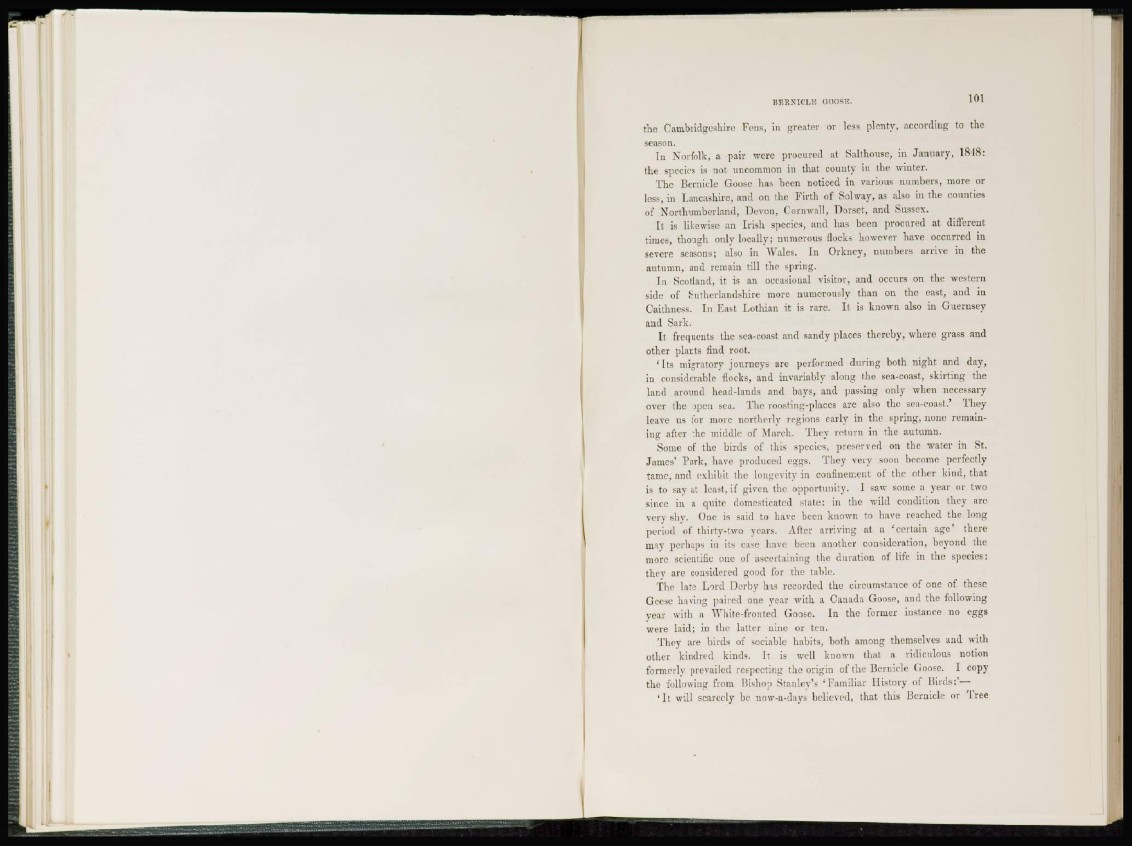
BEBNICLB GOOSE. 101
the Cambridgeshire Fens, in greater or less plenty, according to the
season.
I n Norfolk, a pair were procured at Salthouse, in January, 1848:
the species is not uncommon in that county in the winter.
'The Bcrnicle Goose has been noticed in various numbers, more or
less, in Lancashire, and on the Firth of Solway, as also in the counties
of Northumberland, Devon, Cornwall, Dorset, and Sussex.
It is likewise an Irish species, and has been procured at different
times, though only locally; numerous flocks however have occurred in
severe seasons; also in Wales. In Orkney, numbers arrive in the
autumn, and remain till the spring.
I n Scotland, it is an occasional visitor, and occurs on the western
side of Sutherlandshire more numerously than on the east, and in
Caithness. In East Lothian it is rare. Il is known also in Guernsey
and Sark.
It frequents the sea-coast and sandy places thereby, where grass and
other plants find root.
' I r s migratory journeys arc performed during both night and day,
in considerable flocks, and invariably along the sea-coast, skirting the
land around head-lands and bays, and passing only when necessary
over the open sea. The roosting-places arc also the sca-coast.' They
leave us for more northerly legions early in the spring, none remaining
after the middle of March. They return in the autumn.
Some of the birds of this species, preserved on the water in St.
James' Park, have produced eggs. They very soon become perfectly
tame, and exhibit the longevity in confinement of the other kind, that
is to say at least, if given the opportunity. I saw some a year or two
since in a quite domesticated state: in the wild condition they are
very shy. One is said to have been known to have reached the long
period of thirty-two years. After arriving at a 'certain age' there
may perhaps in its case have been another consideration, beyond the
more scientific one of ascertaining the duration of life in the species:
they are considered good for the table.
The late L i r d DL'rby has recorded the circumstance of one of these
Geese having paired one year with a Canada Goose, and the following
year with a White-fronted Goose. In the former instance no eggs
were laid; in the latter nine or ten.
They arc birds of sociable habits, both among themselves and with
other kindred kinds. It is well known that a ridiculous notion
formerly prevailed respecting the origin of the Bernicle Goose. I copy
the following from Bishop Stanlev's 'Familiar History of Birds:'—
' I t will scarcely be now-a-days believed, that this Bcrnicle or Tree